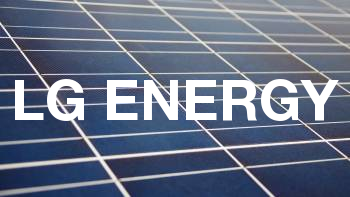

Finn's SolaX Power Batteries Review & Verdict
Finn Peacock has been a Chartered Electrical Engineer since 1998, and is ex-CSIRO
Solax used to use NMC battery cells supplied by LG Chem. That should have provided some confidence — until a significant (and currently ongoing) LG recall affected some Solax batteries. Those Solax models are now discontinued, and the company has since switched to LFP chemistry cells from another supplier.
I’m not a fan of the Solax brand, its hardware, or its support. For similar money, I’d go with a Sungrow battery every time.
SolaX Power Batteries: Pros & Cons
- Modular
- Comparatively cheap
- Must use Solax hybrid inverters
About SolaX Power
Solax been around for a while, having its roots in a company called Suntellite Group, which established back in 2003. The Solax brand was established in 2012, and the firm has evolved into a multinational corporation with more than 2,000 employees worldwide. It started out producing hybrid inverters in 2013, and its first battery was released in 2017.
As with many solar battery companies, Solax headquarters are in China - but it also has offices in Netherlands, Germany, UK, Australia, Japan and the USA. The company established a subsidiary in Australia in 2014.
Australian Contact Info
Address: 21 Nicholas Dr, Dandenong South VIC 3175
Email: [email protected]
Service Hotline: 1300 476 529
Solax Batteries
In Australia, Solax's major storage product family is the TriplePower. These are "plug and play" batteries with usable capacity up to 43.1kWh and charge/discharge power up to 23.2kW.
T-BAT-SYS-HV-5.8
This line of batteries starts off with a usable capacity of 5.1 kWh, but can be expanded with additional "slave" units out to 20.7kWh usable capacity. The master unit measures 474 x 193 x 708mm and weighs 72.2kg. The slave add-ons are 474 x 193 x 647mm and weigh 68.5kg.
Continuous power ratings range from 2.8 kW for the master unit, up to 11.5 kW for a fully expanded system. All use lithium-ferro phosphate (LFP/LiFePO4) chemistry cells and Solax says the batteries have a service life of more than 6,000 cycles.
These batteries can be floor or wall mounted, either indoors or outdoors.
Note that these Solax TriplePower batteries are only compatible with hybrid Solax inverters and are not off-grid capable. As far as pricing goes, Solax are one of the cheaper lithium-ion battery systems available in terms of cost per warranted kilowatt-hour.
T-BAT-SYS-HV-S3.6
The base model of this LFP-chemistry battery line has 6.5kWh of usable storage capacity, but can be built out using stackable 3.6kWh modules weighing 33.5 kg each to 43.1 kWh (two stacks). Power ratings start at 3.5kW for the base model and increment up to 23.2kW for a 43.1 kWh system. IP65 rated, this battery is suitable for both indoor and outdoor installation.
Again, inverter compatibility is limited to Solax hybrid inverters.
Compare specifications of the TriplePower with models from other brands on SQ's home battery comparison table.
Solax Recall
Some SolaX Power X-cabinet and PowerStation models (now discontinued) with cells supplied by LG Chem are subject to a recall. Affected systems may overheat and cause a fire. It appears Solax is no longer using LG cells as the battery chemistry of current TriplePower models is lithium-ferro phosphate (LFP/LiFePO4), and the LG cells were Nickel Manganese Cobalt (NMC).
Solax Warranty
Solax provides a 10-year warranty on its batteries. It guarantees the TriplePower will retain at least 70% of its nominal storage at the end of the warranty period. An interesting condition is when expanding a system. If the original battery is more than 1 year old, Solax needs to be contacted first for consent.
If you have a Solax system, share your thoughts on how it has been performing.
SolaX Power has no solar batteries in our database
Filter by:
SolaX Power Reviews (22)
Show Most Relevant reviews from All time
- 5 star 16
- 4 star 2
- 3 star 3
- 2 star 0
- 1 star 1
View Timeline
28 January 2024
An incentive was offered by Stored Solar for this review. Learn more here.
24 August 2023
25 January 2025
An incentive was offered by Regen Power for this review. Learn more here.
23 June 2021
01 June 2021
15 October 2023
21 June 2022
05 April 2022
25 January 2021







